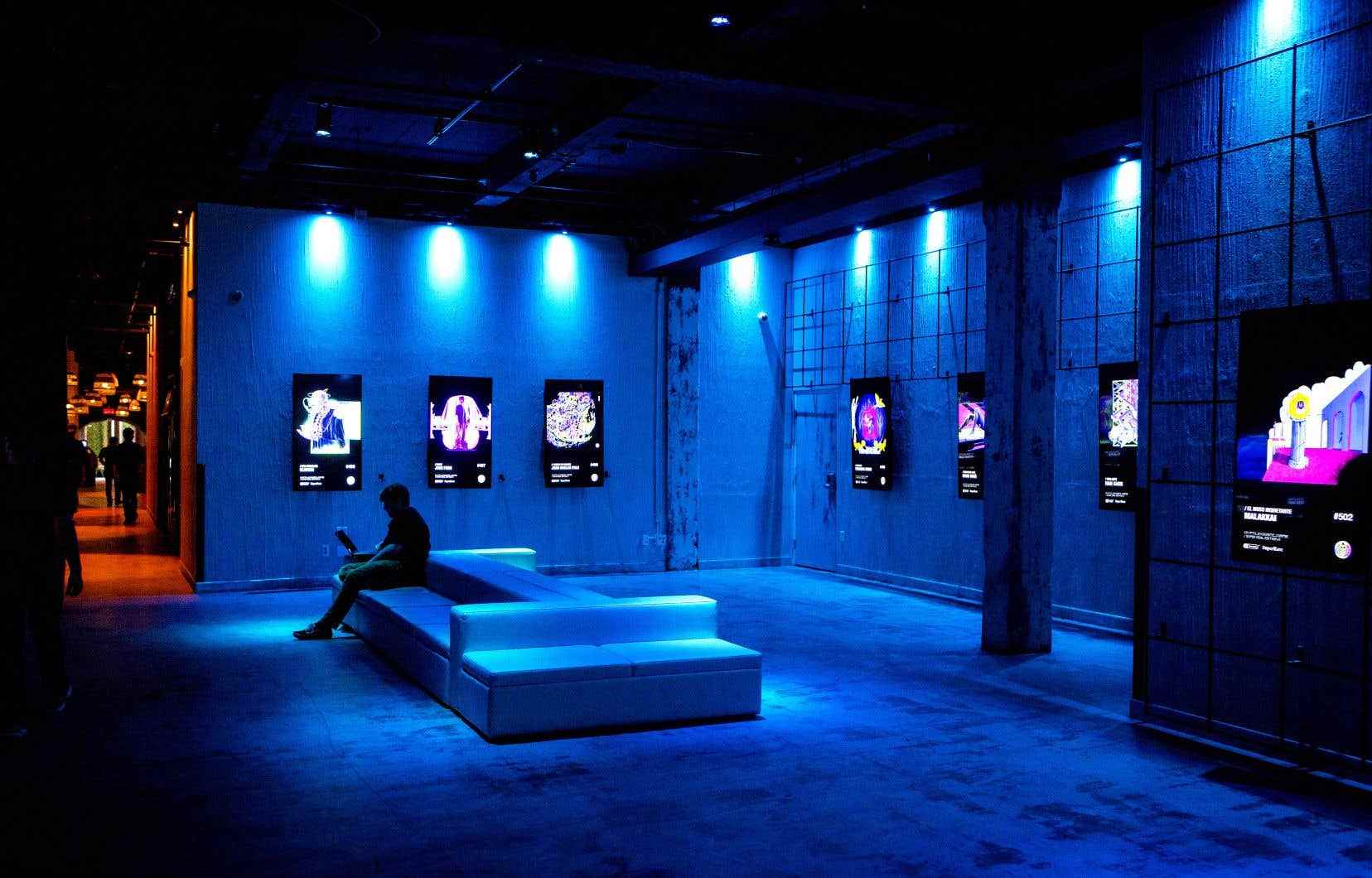Young people are breaking records in the art market this year. More numerous than ever to collect works or invest in art, they advocate a democratization of the market using new technologies. Overview of a universe in turmoil, where artistic creation is getting closer and closer to finance.
Collectors aged 38 and under now represent almost 60% of the global pool of buyers who spend more than $10,000 on works of art per year. This is a record, according to the latest annual report from UBS and the Art Basel fair, considered benchmarks in the field.
Although the most expensive works are always bought by older collectors, young people are the most inclined to buy art for its value as an investment rather than for its aesthetic qualities, again according to the same report.
“This phenomenon has existed for a long time, but digital technologies have exacerbated the vision of artistic creation as an investment,” confirms Christine Bernier, associate professor in the Department of Art History at the Université de Montréal.
She explains that new digital platforms and NFTs (non-fungible tokensor non-fungible tokens, digital certificates of authenticity associated with virtual works) attract young investors who were previously not interested in the art market, especially among the better off.
The Masterworks Revolution
The American platform Masterworks, founded in 2017, is making an impressive breakthrough with young collectors. It is the first service in the world allowing users to buy shares of works (for only $20) with the aim of seeing them increase in value on the market; it’s a bit like what Wealthsimple allows with shares on the stock market, for example.
Internet users buy shares of works that belong to the company and that it intends to resell at a profit after 3 to 10 years of ownership. It is also possible to buy there shares of works that other investors own, made public on their “secondary market”. The platform takes 20% of the profits generated by users on each sale of work, and withdraws an annual management fee of 1.5% on all their profits.
Masterworks now has 500,000 users — the majority of whom are millennials — and 30,000 investors who market works. Although “Secondary Markets” is only open to Americans for now, the company says it wants to expand the feature to other countries, including Canada.
All the works marketed on the platform are said to be ” blue-chip art », that is to say, pieces by great masters likely to experience meteoric rises on the market. There are many star artists such as Banksy, Jean-Michel Basquiat, Yayoi Kusama and Andy Warhol.
“We try to educate our users about art and the market, but mostly we show them the merits of art as an investment,” says Masha Golovina, Masterworks’ head of acquisitions.
This manager, who has worked for the company since its foundation, says that collectors have less and less need to know art to buy it. It is pleased that its users “come above all for high returns” sheltered from inflation and the vagaries of the stock markets.
The growing popularity of NFTs and online galleries
According to the Artprice platform, NFTs have established themselves with a sales record of $2.7 billion for the 2020-2021 financial year (+117%). Its latest report indicates that the trend continues for the first quarter of 2022.
Art economics specialist Christine Bernier maintains that NFTs remain mainly accessible to artists and investors initiated into the world of cryptocurrencies for the moment, although they are attracting more and more young novices.
In Montreal, the chic Ox Society gallery, which opened last summer in the New City Gas complex in Griffintown, has made it its mission to democratize access to NFTs. You can walk around for free and find digital works presented on screens, on sale for several thousand dollars.
“We are somewhere between a museum experience and a gallery,” explains co-founder Yannick Folla. This young entrepreneur wishes not only to sell works, but also to inform his public about NFT through cultural mediation activities.
Yannick Folla explains that most NFT buyers at his gallery are young investors “who come from the crypto world”. But he is convinced that this market should expand its customer base from year to year.
A little further north of downtown Montreal is the first physical exhibition space of the Montreal virtual gallery Gallea. Located in the complex of the former Maison-Alcan, owned by Guy Laliberté, where there is now an incubator for young shoots, Gallea offers nearly 10,000 works, physical and digital, on the Web. Launched in 2018, the Montreal company has become the largest virtual gallery in Canada.
“We market emerging artists who are becoming more professional and whose value of their works may be called upon to increase,” explains Guillaume Parent, founder and director of Gallea. For now, the works sold there remain affordable and mainly meet personal needs, but the entrepreneur is convinced that young people like him want to invest more in art over the years. He describes the Masterworks platform as “inspiring”.
Christine Bernier therefore realizes that new technologies are attracting more and more young investors, and that they see art first and foremost as financial opportunities. However, she remains resolutely optimistic.
According to her, investment firms such as Masterworks and NFT sales will “take their rightful place”, in a context where “non-commercial art” still dominates in institutions. “There have never been so many different practices and so much non-commercial art. There is something for everyone, it’s wonderful. »
